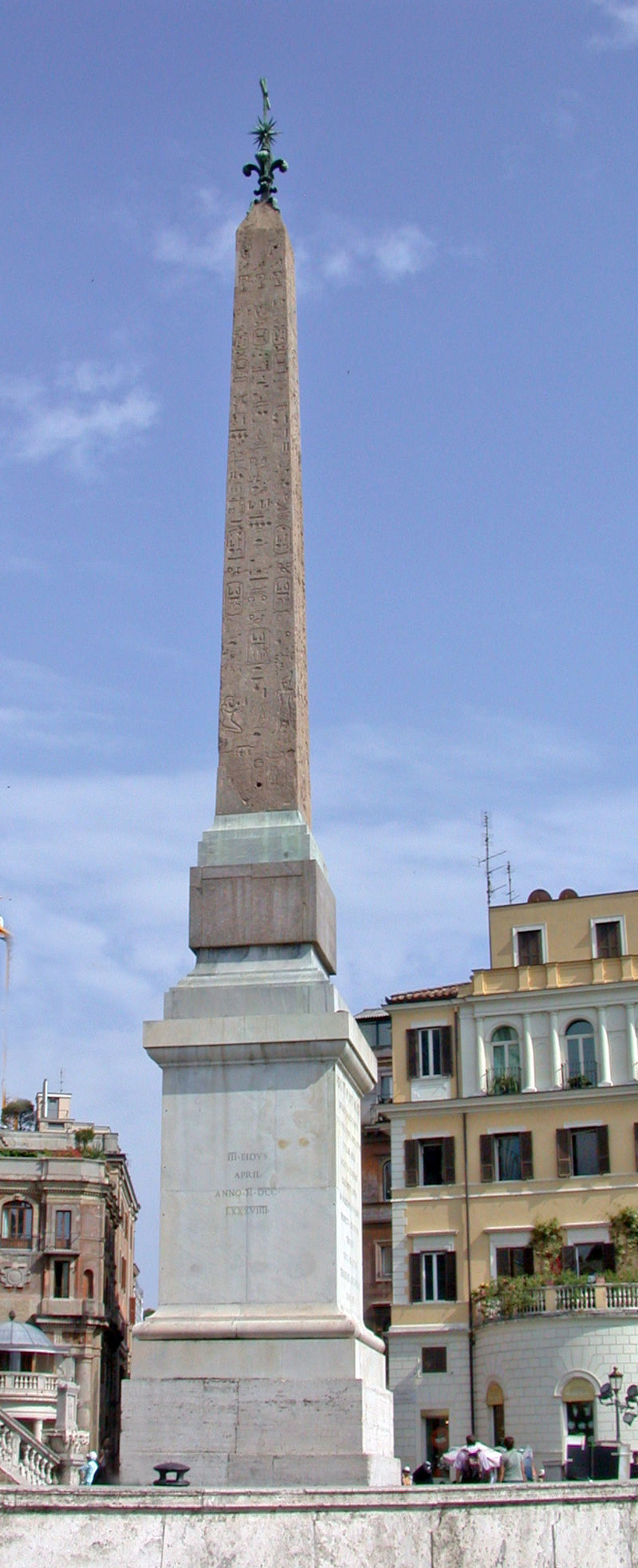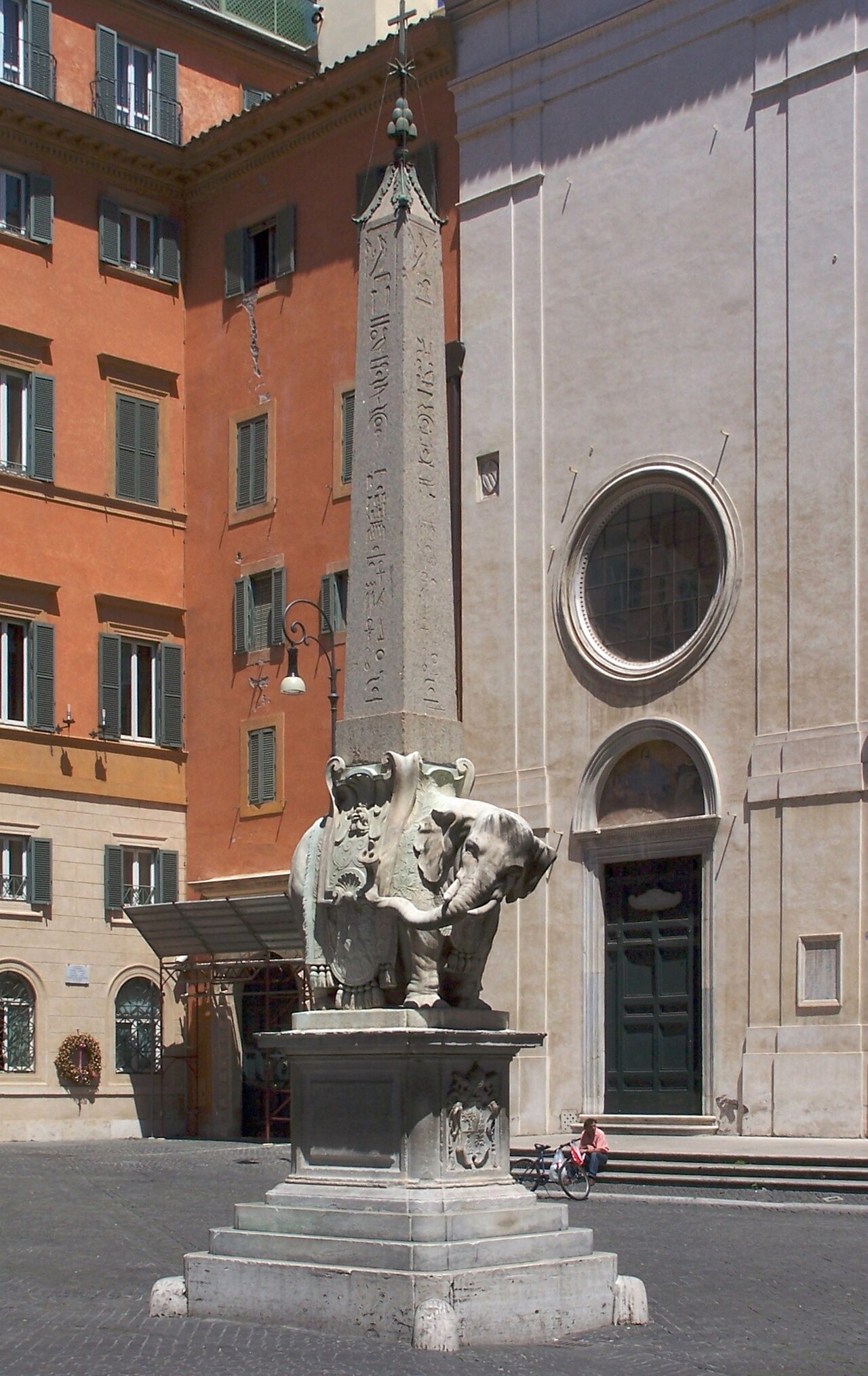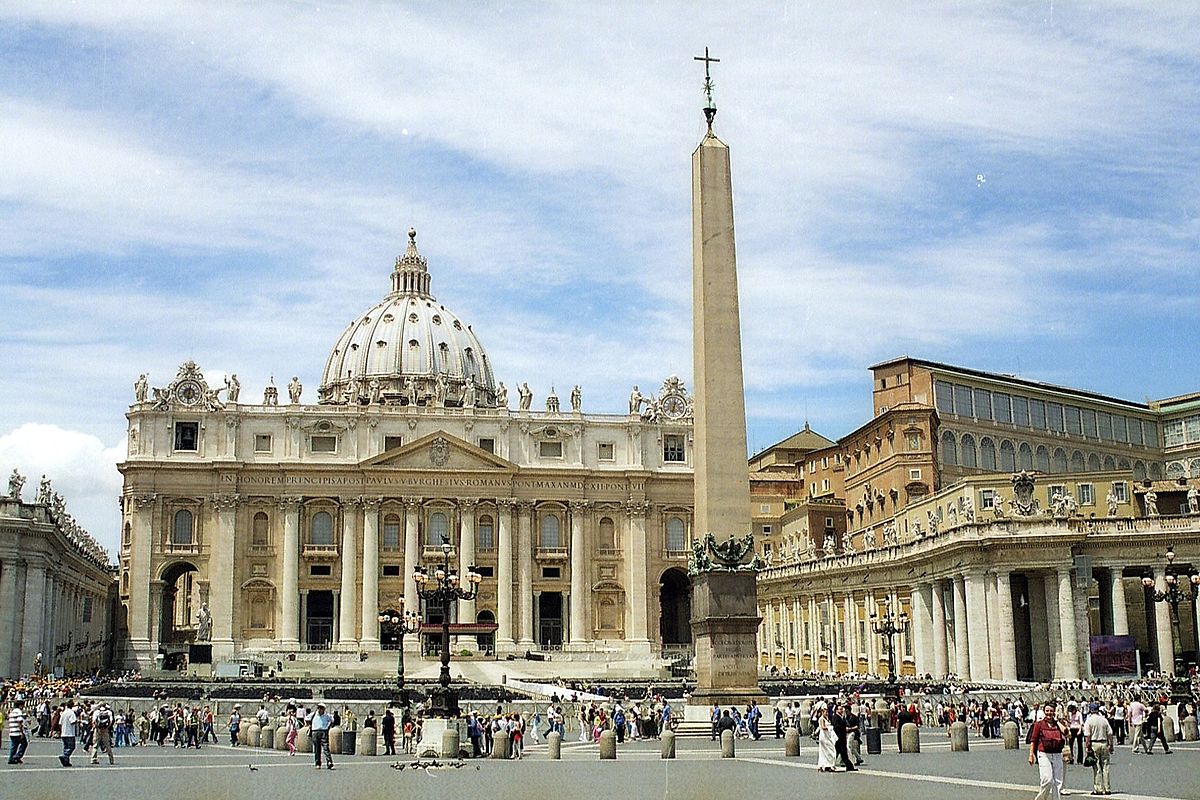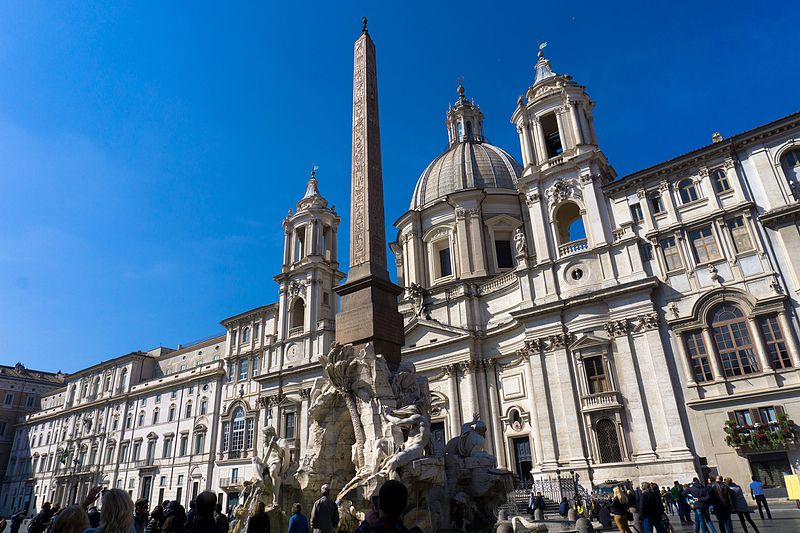According to tradition, Rome was founded in 753 BC. This Iron Age hamlet of shepherds became the capital of the Roman Empire, later of the Roman Catholic Church, and since 1870, the capital of modern Italy. No other city can claim to have been the “caput mundi” or head of the world, for so many centuries.
Rome holds another unusual world record; it’s home to more ancient Egyptian obelisks than anywhere else in the world including Egypt, which counts only a handful. In Rome today there are 13, although apparently there were 48 at the height of the Empire.

The majority of obelisks, including Rome’s, date to the New Kingdom’s XVII (c.1500 BC) and XIX (c.1340 BC) dynasties. Rome’s were brought here during the Empire as war trophies by Augustus (27BC-14AD), Caligula (37-41AD), Titus (79-81AD), Domitian (81-96AD), Hadrian (117-138 AD), Diocletian (284-305 AD) and Constantine II (337-340 AD).
Others were made-to-order in Egypt for Roman emperors, but their hieroglyphs were carved after delivery in Rome, if ever.
Speaking of such made-to-order obelisks, the one in Piazza Trinità dei Monti at the top of the Spanish Steps, was commissioned by Gaius Sallustius, an unscrupulous friend of Julius Caesar who’d made a fortune in Africa and was the only non-emperor to own an obelisk.
He commissioned this imitation of the “Flaminian Obelisk”, which he’d seen in Egypt, but had its hieroglyphs carved in Rome.
If you compare the two, you’ll find that the Romans miscopied the inscription so that it makes no sense.
By the way, the “Flaminian Obelisk”, one of the first two obelisks to reach Rome under Augustus, gets its name from the ancient Roman road Via Flaminia, and was the first obelisk that travelers from Northern Europe would have seen.
Often knocked down by earthquakes and left abandoned like most of the “Eternal City” during the Middle Ages, they were rediscovered and erected in new sites by the popes Julius II (r.1503-13), Sixtus V (r.1585-90), Innocent X (r. 1644-55), Clement XI (r. 1700-21), Benedict XIV (r. 1740-58), Pius VI (1775-99) and Pius VII (1800-23) as markers for Christian pilgrims to indicate their route to St. Peter’s.
Thus, they’re usually just outside Rome’s famous monuments: Pantheon, the Italian Parliament, and Quirinal Palace; squares: Piazza Navona and Piazza del Popolo; churches: St. Peter’s, St. John in Lateran, Santa Maria Maggiore, Santa Maria sopra Minerva and Trinità dei Monti; and in parks: Villa Borghese and Villa Celimontana, and have the advantage of no entrance fees and long lines.
Several obelisks became integral parts of Renaissance or Baroque sculptures like Bernini’s marble statue of Pope Leo X’s pet elephant Hanno.

Near the Pantheon and outside Santa Maria sopra Minerva, Hanno balances a 6th-century BC obelisk, Rome’s smallest, on his back. Another dating to the reign of Ramses II (1279-1213 BC) was added by Pope Clement XI to the fountain in front of the Pantheon in 1711, but most famous of all is the obelisk mounted on Bernini’s Fountain of Four Rivers in Piazza Navona.
The story of the obelisk in St. Peter’s Square is the most dramatic. It’s Egyptian, but since it doesn’t have hieroglyphs, was probably made-to-order during Roman times.
It was first erected by Augustus in Alexandria’s Roman Forum and brought to Rome in 37 AD by Caligula to decorate his chariot-racing circus on the present site of St. Peter’s Basilica. Unlike Rome’s other obelisks, St. Peter’s was never broken or overturned; only moved. That’s undoubtedly because under Nero (37-68 AD), Caligula’s circus was the site of early Christian martyrdoms, probably including St. Peter’s, so the “eyewitness obelisk” was cherished.
Several real-life eyewitnesses describe the difficulties of moving the obelisk the short distance to the center of the Square in 1586. Because it weighs 312 tons and is in one piece, the unsuccessful attempts to raise it went on for several months and required 44 winches, 900 men and 140 horses.

Pope Sixtus V decreed that anyone who distracted his fellow-workers would be punished by death. But then one day a sailor from San Remo passed by. His nautically-trained eye saw the ropes were so taut they were in danger of snapping. “Put some water on the ropes” he shouted in Genovese dialect. His advice was taken, and since he saved the day and probably the obelisk as well, he wasn’t punished. Moreover, the grateful Pope ordered that henceforth all the Vatican’s Palm Sunday fronds should come from Bordighera near San Remo and they still do!
Besides those in Rome, other historic shafts carted off from Egypt are found in Florence, Istanbul, London, New York, Paris and Urbino. New York’s is the only non-war spoil; it was purchased in 1880 for the then astronomical sum of $100,000 to be located in Central Park just outside the then new Metropolitan Museum of Art.












